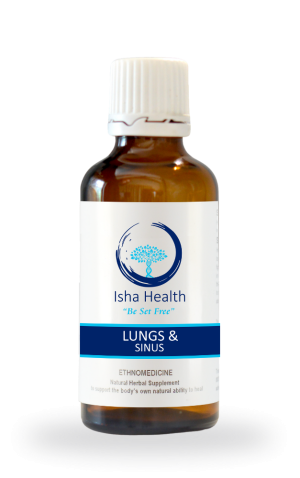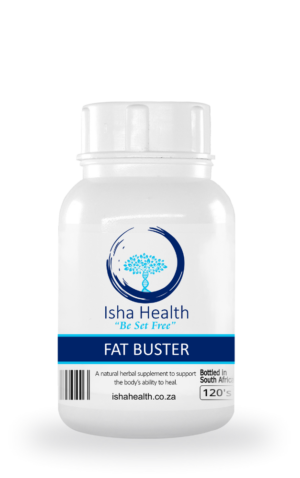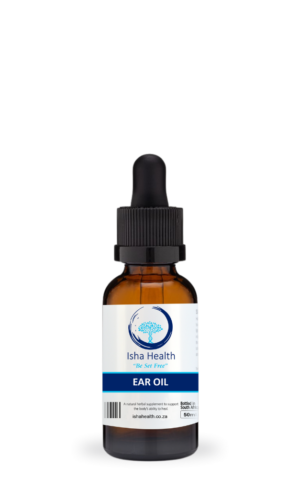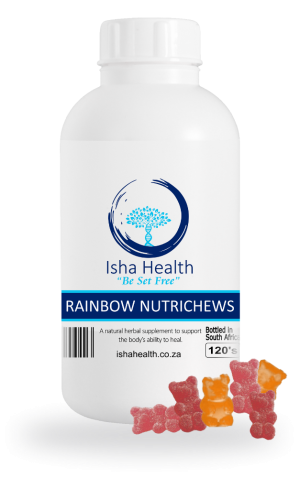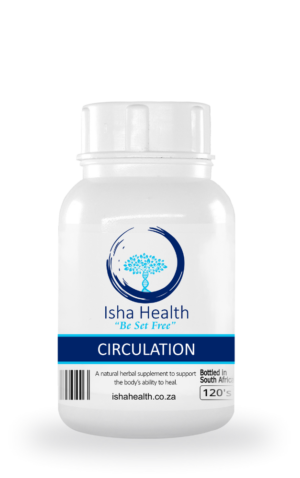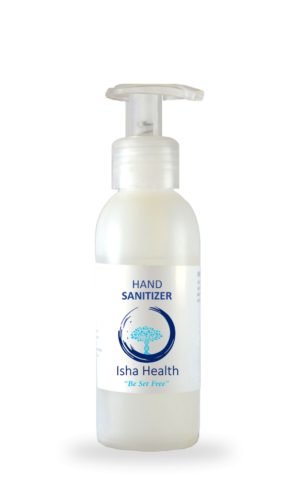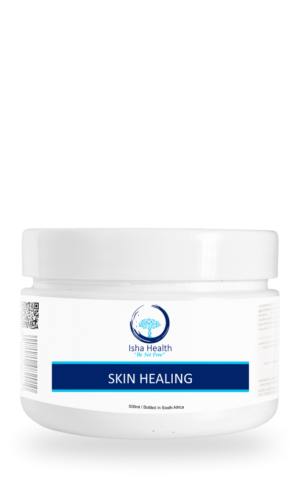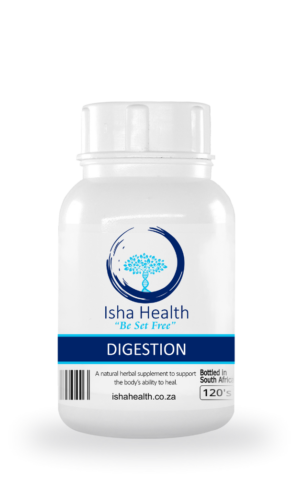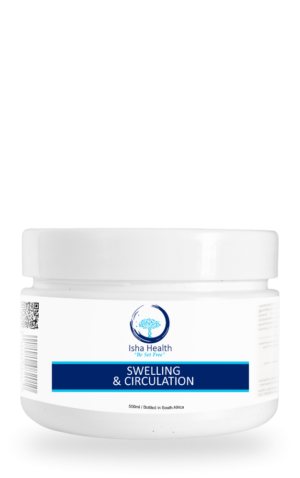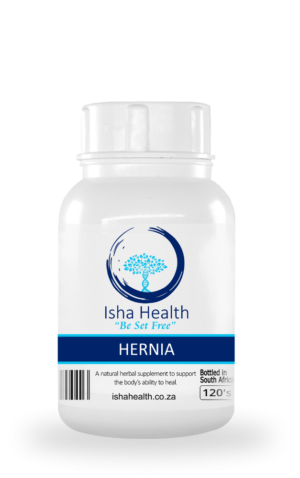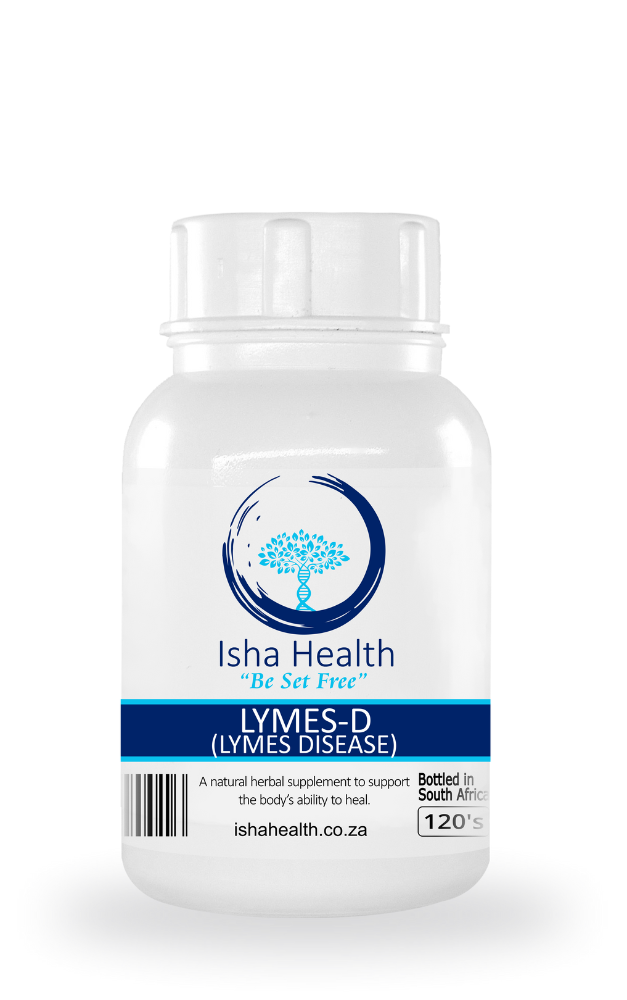
Lymes-D (Lymes Disease)
- 3-5 working days
- Hand-Made
- Manufactured in South Africa
- 100% Natural
- 100% Herbal products
- 100% Manufacturing Guarantee
Description
Directions for Use
Ingredients
Warning
Technical Information
Lyme Disease. Herbal supplement to boost the immune system and limit the ability of Lyme bacteria to grow; directly kills bacteria, both during active and stationery stage, combat Lyme’s including cyst form
2-4 x capsules 3x daily
20 minutes before meals.
Children over 6-12 years:
1x Capsule daily
Children over 12-16 years:
1x Capsule 2x daily according to age.
Alpha Lipoic Acid
Andrographis Paniculata
Bilberry
Cryptolepsis sanguinolenta
Dandelion
Grape Seed extract
Milk Thistle
Knotgrass
Shiitake Mushroom
Terminalia Chebula
Wormwood
Garlic
Magnesium
Oregano
Walnut shells
Selenium
Vit B6 Pyridoxine
Wild dagga
Zinc Picolinate
Other African Herbs
Alpha-Lipoic-Acid: Assists in managing inflammation during antibiotic treatment for spirochetal infections. Regulates cytokines, reducing symptoms associated with Lyme treatment.
Andrographis Paniculata: Exhibits anti-spirochetal, anti-microbial, and anti-cancer properties. Known for inhibiting biofilm formation and boosting the immune system.
Bilberry: Decreases bacterial swarming and demonstrates natural antimicrobial properties, potentially inhibiting Borrelia activity.
Cat’s Claw (Uncaria Tomentosa): Eliminates biofilm and supports the immune system. Known as an immunomodulator, it soothes the GI tract and joints.
Cryptolepsis Sanguinolenta: Research suggests potential antimicrobial support, addressing Borrelia Burgdorferi and demonstrating significant activity against various infections.
Cumin: May impact the stationary phase of Lyme’s bacteria.
Dandelion: Supports adrenal health, acts as a liver tonic, and promotes bile flow. Addresses liver congestion and aids in cleansing toxins from the liver and gallbladder.
Garlic: Limits antibiotic resistance, impacts the stationary phase, and has antimicrobial effects against persisters and biofilm.
Grape Seed Extract: Decreases bacterial swarming and exhibits direct germ-killing properties.
Hydrangea Root: Shows promise in autoimmune disorders by modulating immune responses. Contains halofuginone, which selectively stops harmful immune responses.
Knotgrass: Effective against B. Burgdorferi and Bartonella. Supports detox pathways, calms inflammation, and regulates T-cells.
Lavender: Prevents biofilm adhesion and possesses natural antimicrobial properties.
Magnesium: Essential for physiological processes, especially considering Lyme’s potential depletion of magnesium from the body.
Milk Thistle: Blocks efflux pumps and addresses Lyme-associated liver inflammation.
Oregano: Demonstrates antimicrobial properties against stationary phase B. Burgdorferi, inhibits quorum sensing, and prevents biofilm adhesion.
Raspberry: Prevents biofilm adhesion, blocks efflux pumps, and limits antibiotic resistance.
Sarsaparilla: Assists with brain fog and reduces Herxheimer’s reactions through its ability to bind endotoxins.
Shiitake Mushroom: Improves immune system health, limits Lyme bacteria growth, and has direct germ-killing effects.
Skullcap (Scutellaria Baicalensis): Synergetically helps other herbs cross the blood-brain barrier and encourages a healthy inflammatory response.
Stevia: Decreases biofilm size and may eliminate most germs in biofilm. Potential benefits against persister cells of Lyme.
Terminalia Chebula: Inhibits efflux pumps, breaks down biofilms, and supports detoxification.
Trans-Resveratrol: Modulates cytokine storms, Herxheimer’s reactions, and inflammation. Protects nerve tissue and improves heart and blood flow.
Walnut Shells (Black): Blocks efflux pumps, limits germ antibiotic resistance, and directly kills germs.
Wild Dagga: May assist in heavy metal detoxification, removing heavy metals from the body.
Wormwood: Exhibits antiparasitic and antimicrobial properties. Relieves gut inflammation and purges parasites that may carry B. Burgdorferi.
Yellow Dock: Contains phytochemical Napodin, inhibiting biofilm formation and promoting liver function.
Not suitable for pregnant women.
Protect from sunlight.
Store below 25°c.
Lyme’s disease in the body:
- The process of Lyme disease in the body involves several stages, from the initial tick bite to the potential spread of the bacterium throughout various tissues. Here is a step-by-step explanation of the process:
Tick Bite: Lyme disease begins with the bite of an infected black-legged tick (Ixodes scapularis in the U.S.), which acquires the bacterium Borrelia burgdorferi by feeding on reservoir hosts like white-footed mice.
Transmission of Bacteria: The tick transmits the bacterium to humans during an extended attachment period of 36 to 48 hours, with Borrelia burgdorferi residing in the tick’s gut.
Entry and Localized Infection: The bacteria enter the human body through the tick bite, initiating localized infection at the bite site. An early symptom, erythema migrans, a circular rash, may develop.
Dissemination: If untreated, the bacteria can disseminate through the bloodstream, spreading to other parts of the body, potentially affecting joints, the nervous system, and the heart.
Early Symptoms: Early symptoms include fever, chills, headache, fatigue, muscle and joint aches, and swollen lymph nodes. Neurological symptoms may occur if the bacteria invade the nervous system.
Chronic Lyme Disease: Without prompt treatment, Lyme disease can progress to a chronic stage, leading to persistent symptoms like recurrent joint inflammation (Lyme arthritis) and neurological issues.
Immune Response: The immune system responds by producing antibodies against Borrelia burgdorferi, which can be detected in blood tests. The immune response is a crucial component of diagnosis.
Treatment: Antibiotics, such as doxycycline, amoxicillin, or cefuroxime, are the standard treatment, effectively eliminating the bacteria if administered promptly in the early stages.
Resolution or Persistence: With timely treatment, most individuals recover fully. However, there is ongoing debate and research on persistent symptoms, leading to controversies surrounding “chronic Lyme disease.”
Prevention: Prevention involves avoiding tick-infested areas, using protective measures like clothing and repellents, and promptly removing ticks to reduce the risk of transmission.
Understanding the sequential events of Lyme disease, from transmission to prevention, is essential for effective management and prevention strategies.
How does the Lyme’s bacteria work?
Borrelia burgdorferi, the bacterium responsible for Lyme disease, employs a complex strategy to establish infection and evade the host’s immune system. The process involves various stages:
Attachment and Entry: The bacteria are transmitted to humans through the bite of infected black-legged ticks. The tick, having acquired the bacterium during a previous blood meal from a reservoir host, attaches to the human host and feeds. Borrelia burgdorferi uses specialized structures, such as its corkscrew-like shape and outer surface proteins, to navigate through the tick’s midgut and enter the human host.
Localized Infection: Upon entering the human body, the bacteria initially establish a localized infection at the site of the tick bite. They may form a characteristic circular rash known as erythema migrans.
Dissemination: If not promptly treated, the bacteria can disseminate through the bloodstream, allowing them to spread to various tissues and organs. This dissemination is facilitated by the ability of Borrelia burgdorferi to move through the bloodstream and penetrate different tissues.
Immune Evasion: Borrelia burgdorferi employs several mechanisms to evade the host’s immune response. One key strategy is antigenic variation, where the bacterium alters the expression of its surface proteins, making it challenging for the immune system to recognize and mount an effective defense. The bacteria can also hide within certain tissues, such as joints, where the immune response may be less effective.
Persistence: Some bacteria manage to persist in the host despite the immune response and antibiotic treatment. This persistence contributes to the development of chronic Lyme disease in some individuals, characterized by long-term symptoms even after initial treatment.
Host Response: The host’s immune system responds to the infection by producing antibodies against Borrelia burgdorferi. Diagnostic tests often rely on detecting these antibodies in the blood. Understanding the mechanisms employed by Borrelia burgdorferi is crucial for developing effective diagnostic tools, treatments, and preventive strategies. Ongoing research aims to unravel the intricacies of the bacterium’s biology to improve our ability to combat Lyme disease.
Symptoms of Lyme’s disease:
Lyme disease symptoms can vary and may appear in stages. The most common symptoms include:
Early Symptoms:
- Erythema Migrans (EM): A circular, red rash often resembling a “bull’s-eye” at the site of the tick bite. However, not everyone with Lyme disease develops this rash.
- Flu-Like Symptoms: Fever, chills, fatigue, headache, muscle and joint aches.
Early Disseminated Symptoms:
- Multiple EM Rashes: Rashes may appear in other areas of the body.
- Neurological Symptoms: Facial paralysis (Bell’s palsy), meningitis, numbness or weakness in limbs.
- Heart Involvement: Palpitations, irregular heartbeats (less common).
Late-Stage (Chronic) Symptoms:
- Arthritis: Recurrent bouts of joint pain and swelling, typically affecting large joints like the knees.
- Neurological Complications: Memory problems, difficulty concentrating, nerve pain.
- Other Manifestations: Fatigue, sleep disturbances, and mood changes.
Less Common Symptoms:
- Eye Inflammation: Redness, sensitivity to light.
- Liver and Spleen Inflammation: Hepatitis, enlarged spleen.
- Respiratory Symptoms: Shortness of breath, chest pain.
It’s important to note that not everyone with Lyme disease experiences all of these symptoms, and the severity can vary. Some individuals may have mild symptoms, while others may develop more severe complications.
Additionally, some people may not recall a tick bite or notice the characteristic rash. If Lyme disease is suspected, prompt medical attention is crucial for accurate diagnosis and appropriate treatment with antibiotics.
Symptoms of other diseases that are similar to Lyme’s:
Several diseases share symptoms with Lyme disease, and misdiagnosis can occur. It’s important to consider these conditions when evaluating symptoms that might be associated with Lyme disease:
- Influenza (Flu): Symptoms such as fever, fatigue, headache, and muscle aches can resemble early-stage Lyme disease.
- Mononucleosis (Mono): Fatigue, sore throat, and swollen lymph nodes are common symptoms of both mono and Lyme disease.
- Rheumatoid Arthritis: Joint pain and swelling are symptoms shared with late-stage Lyme disease, leading to potential confusion.
- Fibromyalgia: Chronic muscle and joint pain, fatigue, and sleep disturbances can be present in both fibromyalgia and Lyme disease.
- Multiple Sclerosis (MS): Neurological symptoms like numbness, weakness, and difficulty concentrating can occur in both MS and late-stage Lyme disease.
- Chronic Fatigue Syndrome (CFS): Fatigue, sleep disturbances, and cognitive difficulties are common in both CFS and chronic Lyme disease.
- Autoimmune Disorders: Conditions such as lupus or Sjögren’s syndrome may share symptoms like joint pain and fatigue with Lyme disease.
- Other Tick-Borne Illnesses: Diseases such as anaplasmosis, babesiosis, and ehrlichiosis, transmitted by the same ticks that carry Lyme disease, can cause similar symptoms.
- Depression and Anxiety Disorders: Mood changes, difficulty concentrating, and fatigue can be present in both mental health conditions and Lyme disease.
- Chikungunya and Dengue Fever: In areas where these mosquito-borne diseases are prevalent, their symptoms, including fever and joint pain, may be confused with early Lyme disease.
Due to the potential for symptom overlap, healthcare providers need to consider a thorough medical history, physical examination, and appropriate diagnostic tests to differentiate Lyme disease from other conditions with similar manifestations.
Seeking prompt medical attention and communicating any potential exposure to ticks or travel to endemic areas is crucial for an accurate diagnosis.
Other Tick-borne diseases:
There are several other tick-borne diseases caused by various pathogens. Here is a list of some notable tick-borne illnesses:
- Anaplasmosis: Anaplasmosis is caused by the bacterium Anaplasma phagocytophilum and is transmitted by the black-legged tick (Ixodes scapularis). Symptoms include fever, headache, muscle aches, and fatigue. If left untreated, anaplasmosis can lead to more severe complications.
- Babesiosis: Babesiosis is caused by protozoan parasites, primarily Babesia microti, and is transmitted by the same ticks responsible for Lyme disease (Ixodes scapularis). Symptoms include fever, chills, sweats, muscle aches, and fatigue. Severe cases can occur, particularly in individuals with weakened immune systems.
- Ehrlichiosis: Ehrlichiosis is caused by several species of bacteria in the Ehrlichia genus and is transmitted by the lone star tick (Amblyomma americanum) in the U.S. Symptoms include fever, headache, fatigue, and muscle aches. Severe cases can result in complications affecting the respiratory and nervous systems.
- Rocky Mountain Spotted Fever (RMSF): Rocky Mountain Spotted Fever is caused by the bacterium Rickettsia rickettsii and is transmitted by various ticks, including the American dog tick (Dermacentor variabilis). Symptoms include fever, headache, rash, muscle aches, and nausea. Early detection and treatment with antibiotics are crucial to prevent severe complications.
- Powassan Virus Disease: Powassan Virus Disease is caused by the Powassan virus and is transmitted by ticks, including the black-legged tick (Ixodes scapularis) and the groundhog tick (Ixodes cookei). Symptoms can range from mild flu-like symptoms to severe neurological issues. The virus has no specific treatment, and supportive care is provided.
- Tick-borne Encephalitis (TBE): Tick-borne Encephalitis is caused by the tick-borne encephalitis virus and is more prevalent in Europe and Asia. Symptoms can range from mild flu-like symptoms to severe neurological complications. Vaccines are available in some regions to prevent TBE.
- Colorado Tick Fever: Colorado Tick Fever is caused by the Colorado tick fever virus and is transmitted by the Rocky Mountain wood tick (Dermacentor andersoni). Symptoms include fever, headache, and muscle aches. In severe cases, neurological symptoms may occur.
- Tularemia (Tick Fever): Tularemia, caused by the bacterium Francisella tularensis, can be transmitted by various ticks and through contact with infected animals. Symptoms can include fever, skin ulcers, and swollen lymph nodes. Different forms of tularemia exist, including ulceroglandular and pneumonic.
- Q Fever: Q Fever is caused by the bacterium Coxiella burnetii and can be transmitted by ticks, particularly the lone star tick, and other vectors. Symptoms include fever, fatigue, and pneumonia. Chronic forms of Q Fever can lead to more severe complications.
- Southern Tick-Associated Rash Illness (STARI): Southern Tick-Associated Rash Illness is associated with the lone star tick (Amblyomma americanum), causing symptoms resembling Lyme disease, including a rash. However, the causative agent is still unknown, and it is considered a separate condition.
Why is babesia confused with Lyme’s disease?
Babesiosis is sometimes confused with Lyme disease due to several reasons:
- Similar Geographic Distribution: Babesiosis is prevalent in regions where Lyme disease is also common, particularly in the northeastern and upper midwestern parts of the United States. In these areas, individuals may be exposed to both Lyme disease and Babesia.
- Shared Vector: Both Lyme disease and Babesia are transmitted by the same tick species, primarily the black-legged tick (Ixodes scapularis). This shared vector increases the likelihood of co-infection and may contribute to confusion in symptoms.
- Overlapping Symptoms: The early symptoms of both diseases can overlap, including fever, chills, sweats, muscle aches, and fatigue. Additionally, both can present with the characteristic “bull’s-eye” rash (though not everyone with Lyme disease develops this rash).
- Co-Infections: Individuals bitten by an infected tick may potentially be co-infected with both Borrelia burgdorferi (the bacterium causing Lyme disease) and Babesia microti (the protozoan causing Babesiosis). This co-infection can complicate the clinical presentation and diagnosis.
- Testing Challenges: Laboratory tests for Babesia may not be routinely included in standard Lyme disease testing. Consequently, if healthcare providers focus primarily on Lyme disease, they might overlook Babesiosis, especially if symptoms are not specific.
- Immunosuppression and Severity: In immunocompromised individuals or those with weakened immune systems, both Lyme disease and Babesiosis may present with more severe and atypical symptoms, further complicating diagnosis.
Due to these factors, healthcare providers need to consider the possibility of co-infections and conduct thorough testing when patients present with symptoms suggestive of tick-borne diseases.
Concerns of the use of antibiotics for Lyme’s disease:
The use of antibiotics for treating Lyme disease is generally considered the standard and effective approach, as the disease is caused by the bacterium Borrelia burgdorferi transmitted through the bite of infected ticks. Common antibiotics such as doxycycline, amoxicillin, or cefuroxime axetil are often prescribed to eliminate the bacteria and prevent the progression of the disease.
However, there are certain considerations and potential dangers associated with antibiotic treatment for Lyme disease:
- Side Effects: Antibiotics, like any medication, can have side effects. Nausea, diarrhea, and allergic reactions are common side effects. Some individuals may be more sensitive to certain antibiotics, and severe reactions can occur in rare cases.
- Overuse and Antibiotic Resistance: Overuse or inappropriate use of antibiotics can contribute to antibiotic resistance, a global health concern where bacteria become less responsive to these drugs. This resistance can make infections harder to treat and may lead to the spread of drug-resistant bacteria.
- Disruption of Gut Microbiota: Antibiotics not only target the harmful bacteria causing the infection but can also affect beneficial bacteria in the gut. This disruption may lead to digestive issues and compromise the overall health of the immune system.
- Incomplete Eradication of Bacteria: Despite antibiotic treatment, Lyme disease symptoms may persist in some cases, leading to a condition known as post-treatment Lyme disease syndrome (PTLDS). The cause of PTLDS is not well understood, and it’s unclear whether it results from lingering infection, autoimmune response, or other factors.
- Allergic Reactions: Some individuals may be allergic to certain antibiotics, resulting in potentially serious allergic reactions. It is crucial for individuals to inform their healthcare providers of any known allergies or previous adverse reactions to medications.
- Cytokine Storm: In rare cases, the body’s immune response to the bacterial infection can lead to a cytokine storm—a severe and potentially life-threatening inflammatory reaction. This excessive immune response can cause widespread tissue damage and organ failure.
- Herxheimer’s Reaction: During antibiotic treatment for Lyme disease, a Herxheimer reaction, or Jarisch-Herxheimer reaction, may occur. This is a temporary worsening of symptoms as a result of the release of toxins when bacteria are killed. While usually mild, in some cases, it can lead to an exacerbation of symptoms, including fever, chills, and muscle pain.
- Intravenous Antibiotics: In advanced cases or when oral antibiotics are not effective, intravenous (IV) antibiotics may be used. This mode of administration can pose additional risks, such as bloodstream infections and complications related to catheter use.
Individuals with Lyme disease should collaborate closely with healthcare professionals to tailor their treatment plan based on their specific condition and medical history, taking into account the potential risks and benefits associated with antibiotic therapy.
Ingredients which are traditionally used for this disorder
Technical info:
Andrographis Paniculata: Contains andrographolides, exhibiting anti-spirochetal and immune-modulating properties. Andrographolides stimulate macrophages and inhibit NF-kB, reducing inflammation. Affects TNF-Alpha, IL6, and IL8 cytokines, mitigating inflammatory responses. Research suggests modulation of immune function at the level of T-cells, impacting Lyme pathogenesis. Immunomodulation involves Th1 and Th2 responses.
Bilberry: Rich in anthocyanosides, providing potent antioxidant and anti-inflammatory effects. These compounds inhibit bacterial swarming and contribute to overall immune support. Anthocyanosides have demonstrated efficacy against various infections, impacting Borrelia activity directly.
Alpha-Lipoic-Acid: An essential cofactor in mitochondrial function, Alpha-Lipoic-Acid assists in Horkheimer’s reaction by mitigating inflammation during spirochetal antibiotic treatment. Through its antioxidative properties, it regulates TNF-Alpha, IL6, and IL8 cytokines, reducing symptoms associated with Lyme treatment.
Cryptolepsis Sanguinolenta: Contains cryptolepine, which exhibits antimicrobial properties against Borrelia. Cryptolepsis causes eradication of B. Burgdorferi, including persister forms. Research highlights its efficacy against malaria, herpes, swine fever, and Covid, showcasing broad antimicrobial activity.
Cat’s Claw (Uncaria Tomentosa): Contains pentacyclic oxindole alkaloids (POAs) and quinovic acid glycosides. These constituents contribute to biofilm elimination and immunomodulation. The herb calms an overactive immune system without suppression, making it beneficial for conditions like leaky gut and joint inflammation.
Cumin: Active compounds in cumin impact the stationary phase of Lyme’s bacteria, influencing its growth and persistence. The herb may interfere with bacterial quorum sensing mechanisms.
Dandelion: Rich in flavonoids, tannins, and sesquiterpene lactones. Acts as an adrenal support and liver tonic. Flavonoids contribute to anti-inflammatory effects. Promotes bile flow and liver detoxification, addressing liver congestion.
Grape Seed Extract: Contains proanthocyanidins, potent antioxidants with antibacterial properties. Inhibits bacterial swarming and directly kills germs. Supports immune function through various mechanisms.
Garlic: Allicin and other sulfur compounds in garlic limit antibiotic resistance, quorum sensing, and efflux pump activity. Direct antimicrobial effects against persisters and biofilm contribute to its efficacy.
Hydrangea Root: Rich in halofuginone, which modulates immune responses, particularly Th17 cells. This fine-tuning tool selectively reduces harmful immune responses without compromising overall immune function. Potential applications in autoimmune disorders.
Knotgrass (Polygonum Cuspidatum): Contains resveratrol, effective against B. Burgdorferi, including cyst forms and spirochetes. Resveratrol impacts cytokine pathways, decreasing Herxheimer’s reactions and supporting detox pathways.
Lavender: Active compounds in lavender prevent biofilm adhesion and possess natural antimicrobial properties. Lavender’s antimicrobial effects contribute to overall efficacy.
Magnesium: Depletion of magnesium by Lyme’s bacteria may contribute to symptoms. Magnesium supplementation supports physiological processes and mitigates deficiencies.
Milk Thistle: Rich in silymarin, which blocks efflux pumps and addresses Lyme-associated liver inflammation. Silymarin has hepatoprotective and anti-inflammatory effects.
Oregano: Carvacrol and thymol in oregano have potent antimicrobial properties. Oregano directly kills B. Burgdorferi in stationary phase and inhibits quorum sensing and biofilm formation.
Raspberry: Active compounds in raspberry prevent biofilm adhesion and block efflux pumps. Raspberry’s antimicrobial effects contribute to overall efficacy.
Shiitake Mushroom: Contains beta-glucans, promoting immune system health. Active compounds limit the growth of Lyme’s bacteria and directly kill germs. Reduces warts and supports immune function.
Sarsaparilla: Strong endotoxin-binding ability addresses brain fog and reduces Herxheimer’s reactions. Supports detoxification pathways.
Skullcap (Scutellaria Baicalensis): Contains baicalin, which supports the penetration of other herbs through the blood-brain barrier. Encourages a healthy inflammatory response.
Stevia: Steviol glycosides in stevia decrease biofilm size and eliminate most germs. Effective against persister cells of Lyme.
Trans-Resveratrol: Modulates cytokine storms, Herxheimer’s reactions, and inflammation. Protects nerve tissue and suppresses pro-inflammatory molecules. Improves heart and blood flow.
Terminalia Chebula: Contains tannins and chebulagic acid, inhibiting efflux pumps, breaking down biofilms, and supporting detoxification. Has antimicrobial and anti-inflammatory properties.
Walnut Shells (Black): Contain tannins and juglone, blocking efflux pumps and directly killing germs. Effective against Borrelia in various forms.
Wormwood (Artemisia A): Contains artemisinin, an antioxidant with antiparasitic and antimicrobial properties. Kills persister forms of Lyme bacteria and other parasites.
Wild Dagga: Supports heavy metal detoxification. Removes heavy metals from the body.
Yellow Dock: Phytochemical Napodin inhibits biofilm formation by Candida Albicans and bacterial pathogens. Promotes liver function.

